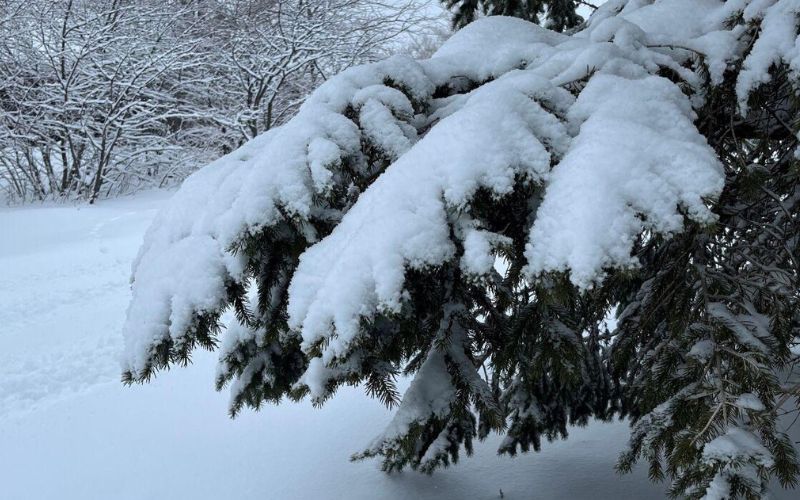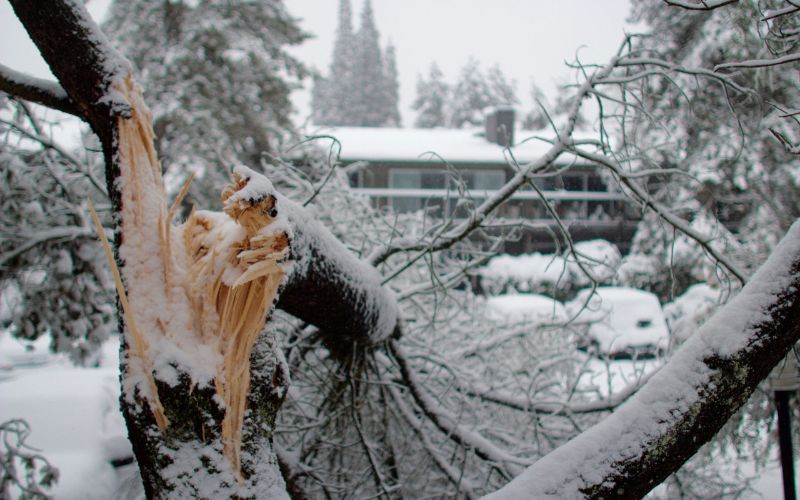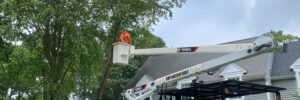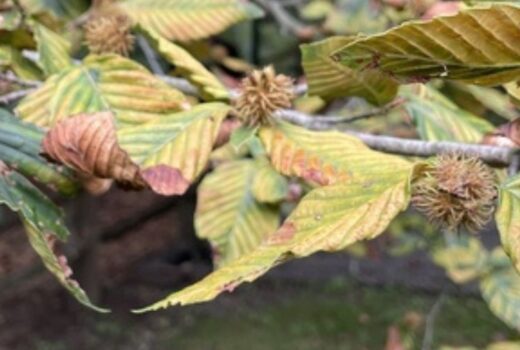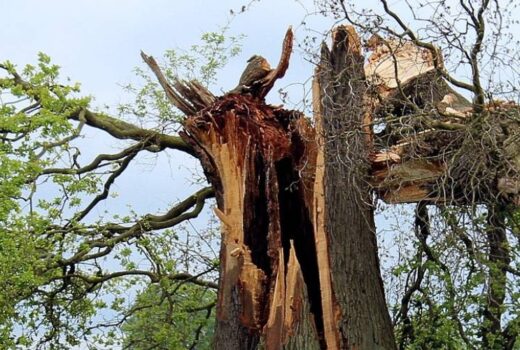In the heart of a bone-chilling Massachusetts winter, it feels like mountains of snowpack onto our beloved trees. Have you ever wondered just how much snow weight these stoic sentinels can bear?
This article will explore the resilience of local flora, the potential risks heavy snowfall can pose, and provide guidance on how to protect your trees from winter’s icy grip.
Snow Weight and Massachusetts Trees – Key Takeaways
- Massachusetts trees, such as Red Oak and Eastern Hemlock, have developed adaptations to withstand snow weight.
- The ability of trees to bear snow weight depends on factors such as health, age, and structural integrity.
- Regular tree maintenance, including pruning weak branches and removing snow after a storm, can help prevent snow damage.
- It is important to consult with an arborist to determine the best approach for protecting trees and to tailor interventions to the specific needs of each tree.
Understanding Snow Accumulation
It’s essential to understand that snow accumulation on trees can vary widely, depending on factors like the amount of snowfall, the type of snow, and the species of tree.
Wet snow, for instance, is significantly heavier than dry, fluffy snow. So, even a small amount of wet snow can weigh down tree branches more than a larger quantity of dry snow.
The species of a tree also plays a crucial role in how much snow it can handle. Some trees, such as pine trees, are designed by nature to withstand heavy snow loads. Their flexible branches bend under the weight of the snow, allowing it to slide off. In contrast, trees with stiff branches, like oak trees, are more likely to break under heavy snow loads.
Understanding snow accumulation and its impact on trees is not just about knowing the weight of the snow. It’s also about recognizing the characteristics of different tree species and how they react to various types of snow.
So, when a heavy snowstorm is predicted, it’s wise to take precautions to protect vulnerable trees in your yard from possible damage.
Resilience of Local Flora
You’d be surprised how resilient the local flora can be when subjected to heavy winter conditions. Massachusetts trees, in particular, have developed incredible adaptations to withstand the weight of the snow. They naturally bend, bow, and even lose some branches under heavy snowfall, but this doesn’t mean they’re giving up.
Most Massachusetts trees, like the Red Oak or the Eastern Hemlock, can handle around 10 to 20 pounds of snow per cubic foot. They possess flexible branches and dense wood that help them carry this weight. However, keep in mind that the tree’s ability to bear this weight heavily depends on its overall health, age, and structural integrity.
Trees also employ a neat trick to shake off excess snow. As the temperature rises during the day, the trees slightly defrost, causing the snow to slide off. This helps prevent the accumulation of too much weight on the branches.
Remember, just like us, trees have their limits too. If the weight of the snow exceeds its capacity, it can become severely damaged or even uprooted. Therefore, it’s important to monitor the health of your trees regularly and provide them with proper care.
Potential Risks and Damages
While resilient, your local flora can unfortunately face potential risks and damages from harsh winter conditions. Mass amounts of snow can pose a significant threat to Massachusetts trees. Snow weight can cause branches to bend, crack, or even snap off completely. This can lead to property damage if trees are near homes or other structures and can also pose a safety hazard if branches fall on power lines or block roads.
When snow accumulates on tree branches, it adds a substantial amount of weight. Even the sturdiest trees can only handle so much. Some species, like the Eastern Hemlock and Sugar Maple, can withstand more snow weight than others, but every tree has its limit. If a storm dumps heavy, wet snow, the danger escalates. This type of snow sticks to branches and doesn’t easily shake off, increasing the risk of damage.
Despite the risks, there are precautions you can take. Regular tree maintenance, such as pruning weak or dead branches, can help prevent snow damage. Also, removing snow from trees gently after a storm can reduce the weight burden. It’s about understanding and respecting the power of nature and doing your part to protect your local trees.
Measures for Tree Protection
There’s no denying that proactive measures can significantly reduce the potential damage to our local flora during the harsh winter months. As a resident of Massachusetts, it’s important to take steps towards protecting your trees from the heavy snowfall.
When it comes to safeguarding your trees, consider these measures:
Trimming and Pruning: Regular maintenance can keep your trees healthy and resilient. Target weak branches and limbs that could easily break under the weight of snow.
Bracing and Cabling: This technique provides additional support to the tree, reducing the risk of damage due to heavy snow.
Proper Mulching: Mulch acts as a protective layer, preserving warmth around the tree’s base during extreme cold.
Tree Wrapping: Wrap young and thin-barked trees to shield them from the harsh winter elements.
Remember, each tree is unique and might require a different set of interventions. Consult with a local arborist if you’re unsure about the best approach.
It’s better to be safe than sorry when it comes to protecting your trees from the heavy Massachusetts snowfall. So, take action now, and keep your trees standing tall and healthy through the winter season.
Snow Weight and Massachusetts Trees – Frequently Asked Questions
What types of trees are most common in Massachusetts?
In Massachusetts, you’ll commonly find trees like Red Maple, Eastern White Pine, and Northern Red Oak. American Elm, Balsam Fir, and Black Cherry trees are also prevalent throughout the state.
How does snow accumulation affect other types of vegetation in Massachusetts?
Snow accumulation can affect Massachusetts vegetation in various ways. It can insulate plants from cold, but heavy snow may also damage or kill them by breaking stems, bending branches, or smothering low-growing plants.
What are the common signs of tree damage due to heavy snowfall?
Did you know that a foot of fresh snow can add up to 20 pounds of weight per branch? Look out for cracked or broken branches, a leaning trunk, or bark wounds after heavy snowfall. These are clear signs of damage.
Are there any regulations in Massachusetts about removing snow from trees?
No, there aren’t specific regulations in Massachusetts about removing snow from trees. However, it’s crucial to consult a professional to safely remove snow to prevent tree damage or personal injury. Always prioritize safety.
How does snow weight impact the overall health and growth of trees?
Ironically, you might think snow gives your trees a winter glow-up, but too much can actually harm them. Excessive snow weight can cause branches to break, impede growth, and potentially kill the tree.
Concerned About Heavy Snows Compromising Your Trees?
Call Top Notch Tree Today at 781-871-8008. We can assess your trees and make sure they’re ready for whatever winter throws at them. See why we’re the best choice for tree care in Massachusetts!

